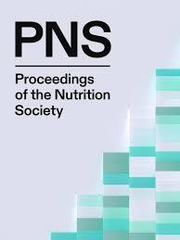No CrossRef data available.
Article contents
A comparative analysis of nutrient intake and nutrient supply data in Australia
Published online by Cambridge University Press: 21 May 2025
Abstract
A clear understanding of nutrient intake at a national scale is important to ensure food security into the future. National nutrition surveys are expensive and slow, with the latest data in Australia from 2011–13. However, nutrients available for consumption in Australia can be easily accessed from the food balance sheets produced by the Food and Agriculture Organization of the United Nations (FAO), with the latest data from 2021. This project compares nutrient intake and nutrient supply data from 2011–2013 to determine whether nutrient supply data is an acceptable surrogate measure for estimating national nutrient intake levels. To compare national nutrient intake and supply, data were collected from the Australian Health Survey 2011–13(1); the 2011–2013 FAO food balance sheets(2); and Nutrient Reference Values (NRVs) for Australia and New Zealand for 23 essential nutrients(3). Nutrient supply data were adjusted with both consumer waste and inedible portions, and inedible portions alone. Nutrient intake and nutrient supply per capita per day were converted to a relative percentage of the target value from the NRVs. One-sample, two-tailed t-tests were conducted to identify statistical differences between intake and supply of individual nutrients. A p-value < 0.01 was considered a significant difference between nutrient intake and nutrient supply. For 18 nutrients there was a significant difference between nutrient intake and supply adjusted for inedible portions only. For 15 nutrients there was a significant difference between nutrient intake and nutrient supply adjusted for both consumer waste and inedible portions. There was no difference between intake and supply adjusted for inedible portions of calcium, dietary fibre, iodine, riboflavin, and long- chain omega-3 fatty acids. For r calcium, magnesium, zinc, iron, iodine, riboflavin, long-chain omega-3 fatty acids, and folate equivalents there was no difference between intake and supply adjusted for consumer waste and inedible portions. When supply data was adjusted for both consumer waste and inedible portions this reduced the differences between intake and supply, making it a better representation of nutrient intake data. This study found that nutrient supply data from the FAO, even after adjustment for inedible portions and consumer waste, was not suitable for estimating nutrient intake of the Australian population. A key limitation was the unavailability of consumer food waste data specific to Australia (the data used was representative of Oceania), which may further reduce the differences between supply and intake data. Assessing national dietary intake is challenging(4,5) but current survey practice cannot easily be replaced for understanding the nutrient intake of Australians.
Information
- Type
- Abstract
- Information
- Copyright
- © The Author(s), 2025. Published by Cambridge University Press on behalf of The Nutrition Society


